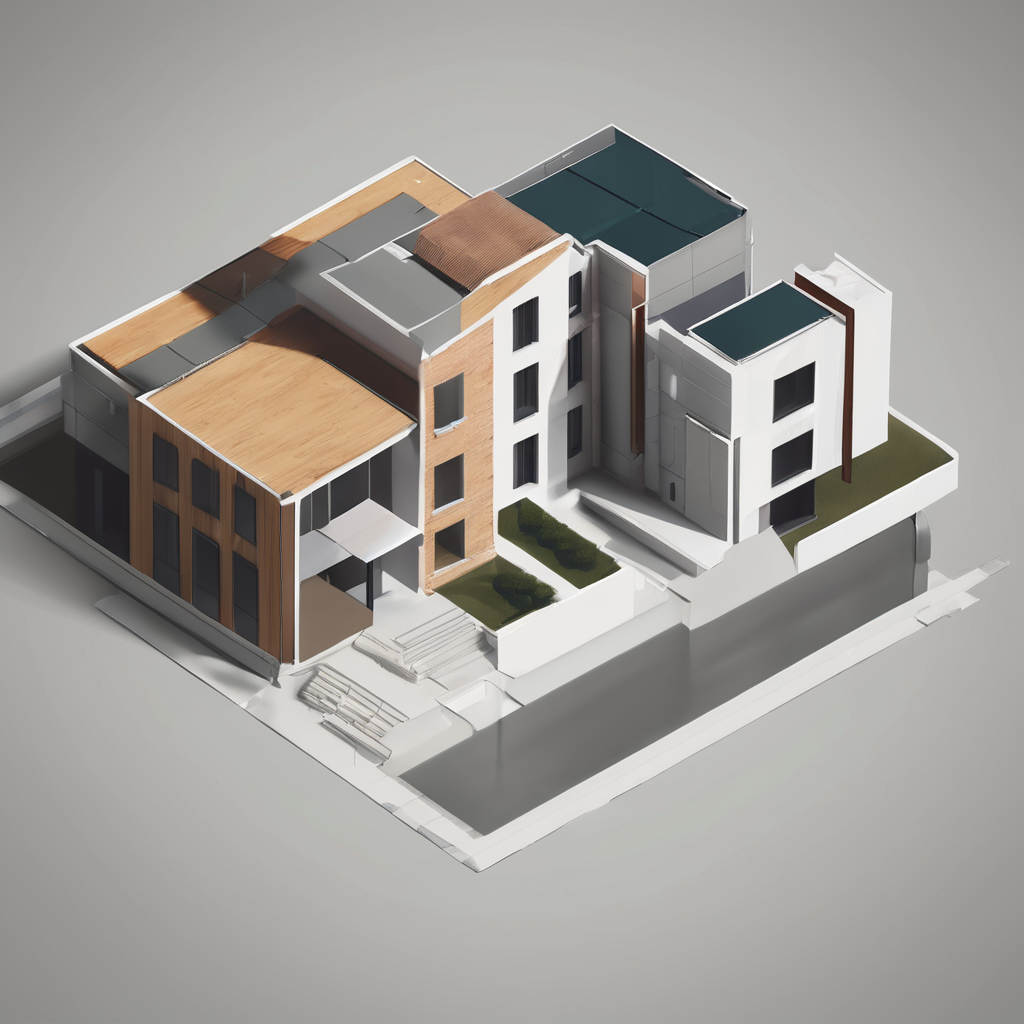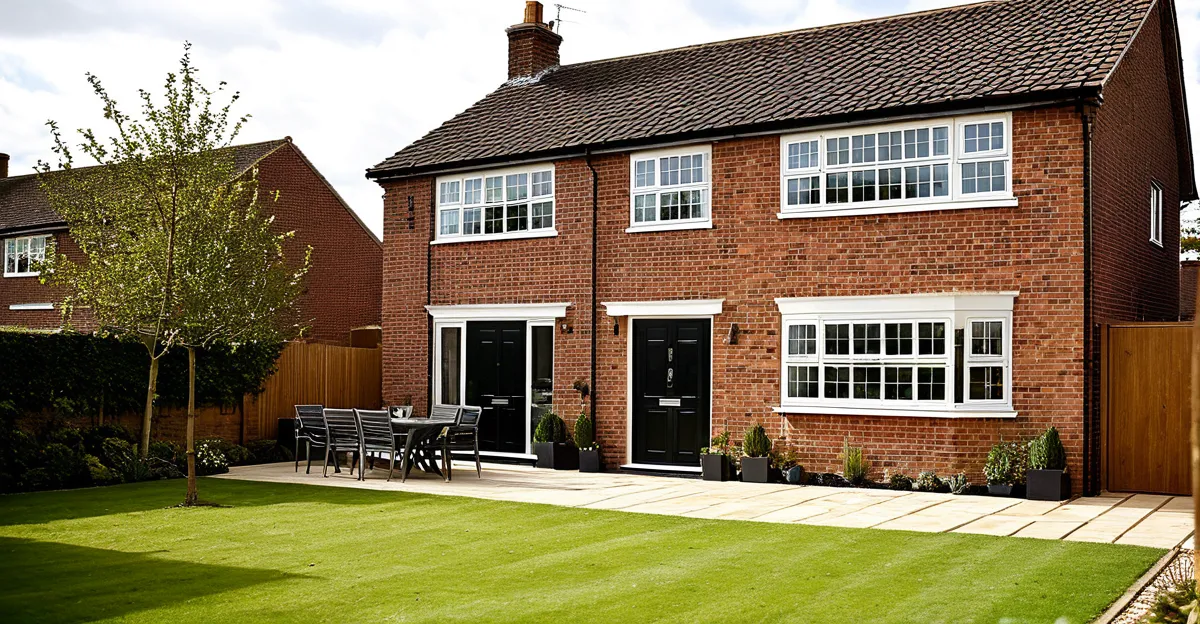Key factors shaping UK home design
Understanding the key factors influencing UK home design is essential for both homeowners and professionals. The UK’s unique climate plays a crucial role, demanding well-insulated structures and materials suited to damp, often cool conditions. This need drives architects and builders to prioritize energy-efficient solutions, impacting choices in windows, roofing, and insulation.
Another vital element is the historical context that shapes home architecture UK-wide. Many areas boast conservation regulations preserving specific styles, which means that new builds or renovations must respect traditional aesthetics. This legacy influences rooflines, brickwork, and window designs, blending the old with the new.
Have you seen this : How Does Architecture Influence Home Value in the UK?
Urban density and space constraints also weigh heavily. In many UK cities, limited plot sizes mean that maximizing space vertically or using innovative layouts becomes necessary. This often results in bespoke designs tailored to the immediate environment.
Finally, social and economic trends, from family size to lifestyle aspirations, dynamically shape homes. Understanding how these influencing factors interact helps in creating dwellings that balance practicality with contemporary needs. Assessing these intertwined elements ensures UK home design stays functional, comfortable, and beautifully integrated into its surroundings.
Also read : What Future Remodeling Trends Could Transform UK Homes?
Architectural styles and historical influences
In the UK, architectural styles are deeply rooted in history, reflecting centuries of cultural evolution. From Tudor to Georgian, Victorian to Edwardian, each period home in the UK carries distinctive features that influence modern design. For example, period homes UK often showcase original sash windows, ornate cornices, and decorative fireplaces, which are preserved or sympathetically restored in contemporary renovations.
Historical home design varies regionally, shaped by local materials and traditions. In the north, stone-built cottages with steep roofs are common, while southern homes might feature brickwork and grander facades. These regional differences inform current architectural choices, blending heritage with modern requirements like insulation and energy efficiency.
Many historical elements, such as bay windows and exposed timber beams, have been adapted to suit today’s lifestyles. This mix honors the charm of earlier UK architectural styles while offering comfort and practicality. Understanding these influences helps homeowners and architects maintain the unique character of period homes while embracing innovation. This balance between preservation and modernization remains a key theme in the evolution of British residential architecture.
Building regulations and planning permissions
Understanding UK building regulations is essential for ensuring that home projects meet legal standards for safety, energy efficiency, and accessibility. These regulations apply to various aspects, such as structural integrity, fire safety, and insulation. Compliance guarantees that any building work conforms to government-mandated guidelines and avoids future legal and financial complications.
Planning permission UK is required when making significant changes to a property’s structure or usage. Local councils evaluate applications to ensure that new builds or renovations align with community plans and do not negatively impact the environment or neighbours. Minor improvements might be exempt, but major extensions or new constructions usually need approval.
Special considerations arise in conservation areas and for listed buildings. Restrictions here preserve historical and architectural significance, often limiting alterations to external appearances and materials. Homeowners must navigate these rules carefully, often consulting with planning officers to balance preservation with modern needs.
By adhering to housing compliance rules, integrating planning permissions, and respecting conservation guidelines, homeowners can smoothly progress with their projects while safeguarding their investments and the character of their communities.
Climate and environmental considerations
Understanding the UK climate impact is crucial when designing sustainable homes. Homes must be adapted to withstand frequent rain, cold winters, and variable temperatures. This environmental adaptation UK requires materials and construction techniques that offer excellent insulation, preserving warmth during colder months and reducing reliance on heating systems.
Incorporating energy efficiency features is fundamental for sustainability. Double-glazing windows, enhanced wall insulation, and efficient heating systems minimize energy consumption. Solar panels and rainwater harvesting can also be integrated, reflecting a commitment to environmentally responsible home design. These elements not only lower carbon footprints but also reduce long-term costs.
When selecting materials, durability and insulation properties tailored to the UK climate are priorities. Timber frames treated for moisture resistance, high-quality bricks, and eco-friendly insulation like sheep wool or recycled fibers provide resilience against dampness and cold. By focusing on these aspects, sustainable home design creates comfortable, energy-efficient spaces that align with the unique environmental demands of the UK.
Cultural preferences and modern living needs
Family structure and cultural trends in the UK significantly shape contemporary home design. Many British home preferences now emphasize open-plan spaces, reflecting a desire for versatile, communal areas that accommodate both everyday life and social gatherings. This trend aligns with evolving UK lifestyle trends, where multi-functional rooms allow families to adapt spaces as needs change.
Smart home technology is increasingly in demand, blending seamlessly with British home preferences for convenience and efficiency. Modern living needs favor homes equipped with intelligent heating systems, security features, and voice-activated controls, enhancing comfort while conserving energy.
However, there is a clear balance between innovation and tradition. Many homeowners seek designs that respect heritage, incorporating classic elements into flexible interiors. This fusion caters to those valuing a sense of history without sacrificing the practicality required by modern family life.
British home preferences, therefore, are moving toward a sophisticated harmony—where smart technology meets adaptable layouts, and tradition meets contemporary aesthetics, supporting both lifestyle and cultural identity. This evolving approach ensures homes remain relevant and comfortable in an ever-changing world.
Regional variations and local materials
Across the UK, regional home design reflects the diversity of landscapes, climates, and cultural history. Each area’s unique character heavily influences architectural styles, with local building materials playing a crucial role in shaping the look and durability of homes. For instance, in the Cotswolds, honey-colored limestone dominates, lending cottages a warm, timeless charm. Conversely, in the Lake District, slate roofs and stone walls blend seamlessly with the rugged terrain.
The use of locally sourced materials not only preserves regional identity but also ensures better resilience to weather conditions specific to each area. Coastal regions might favour weather-resistant brick or timber, while northern areas often lean on sturdier stone to combat colder temperatures.
This connection between environment and architecture showcases UK housing diversity vividly. Urban areas may incorporate brick and terracotta to capture Victorian or Georgian elegance, whereas rural homes harmonize with natural surroundings through wood or stone.
Understanding these regional variations helps homeowners and builders appreciate how local materials impact both the aesthetic and functionality of homes, making every British neighbourhood uniquely charming and adapted to its geography.
Advanced Features of Robot Hoovers
Robot hoovers have evolved with impressive technological advancements that address common cleaning challenges and enhance convenience. One standout feature is mapping technology, which allows the robot to create a detailed layout of your home. This ensures efficient cleaning paths, avoiding obstacles and minimizing missed spots.
Another important advancement is the integration of smart sensors that detect dirt and adjust suction power accordingly. This means your robot hoover can increase cleaning intensity on carpets or high-traffic areas and conserve battery on smoother surfaces, making the cleaning process both effective and energy-efficient.
Many models now support app connectivity and voice control, which greatly improve user experience. This feature enables scheduling cleanings remotely and controlling the device using smart assistants, offering flexibility for users with busy lifestyles.
These features combined signify a shift from simple automated cleaning to more intelligent and customizable solutions. If you’re considering a robot hoover, exploring models with these advanced capabilities can lead to a more thorough and user-friendly cleaning experience.
Understanding how these features work will help you decide which robot hoover best fits your needs and simplifies your cleaning routine.





